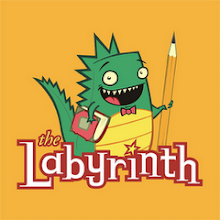Before starting, it would be worth while to explain the method that I hope to follow during my time spent book sketching.
Since the goal is to become a better drawer, I will follow a 3 step process that I hope will get me the desired results. The process is:
1. Gesture.
Also defined as Acting or Action. This begins with a single line that represents the action or the emotion. The single line is then transformed into a stick figure or skeleton that allowes me to judge proportion, and pose. This first area is quick and easily adjusted . For example, if I draw a figure (stick figure) bending forward, it is quite easy to make the figure bend further, or bend less. doing these changes with a finished/detailed figure would be a lot more work. Proportions, such as the length of limbs, size of the head, etc.. are easily adjusted at this stage. For inanimate objects, locations etc.. this is where I consider composition.
2. Structure.
Once the basic gesture drawing is done, the next step is adding volume or structure. Using basic forms such as cubes and cylinders to define the character in 3 dimensional space. The advantage of this step is that its easier to work with basic shapes when dealing with perspective issues. For in-animate objects like buildings or machinery, this is the stage where I consider perspective.
3. Design
This is the final stage or the detail stage where I hope to add things such as hair, facial features, clothing details etc.. For inanimate objects/locations this is where I add architectural details or other technical details.
4. Rendering
For the purpose of this blog, I will be holding off all rendering for the time being. While I personally believe that rendering is extremely important, there's no point spending effort/time rendering drawings that are poorly constructed or designed. For that reason, I will focus on steps 1-3 above and once I feel that the drawings I do are solid, I will begin the second stage of the blog which will focus on this 4Th step:
FYI: rendering includes everything from cross-hatching to shading to colour.
Copying without Construction is just Copying.
Most folks that copy drawings usually do so by jumping to step 3 - Design. They copy the outline and details of the drawings they are looking at. They are not constructing the drawings from the ground up.
The problem is that, while they may become good at copying, they will have a hard time drawing from their imagination. This is because they won't really know how to start a drawing starting with a blank page. By building a drawing using steps 1-3 above, I am preparing myself for the eventuality of drawing my own stuff.
Subscribe to:
Post Comments (Atom)


No comments:
Post a Comment